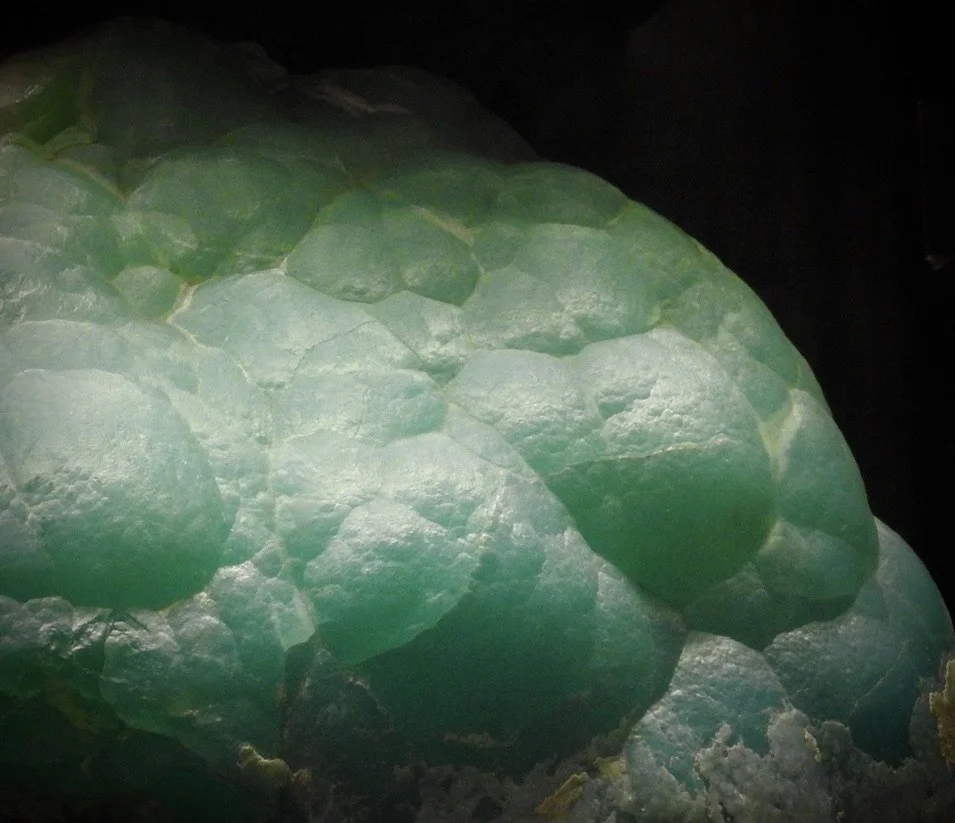
View of the three monumental statues of Cave 3, the largest cave at Yungang Grottoes. Although the grotto itself was started during the Northern Wei period, these sculptures, located at the back of the cave, were made later, during the Tang Dynasty. Photo by Renée DeVoe Mertz.
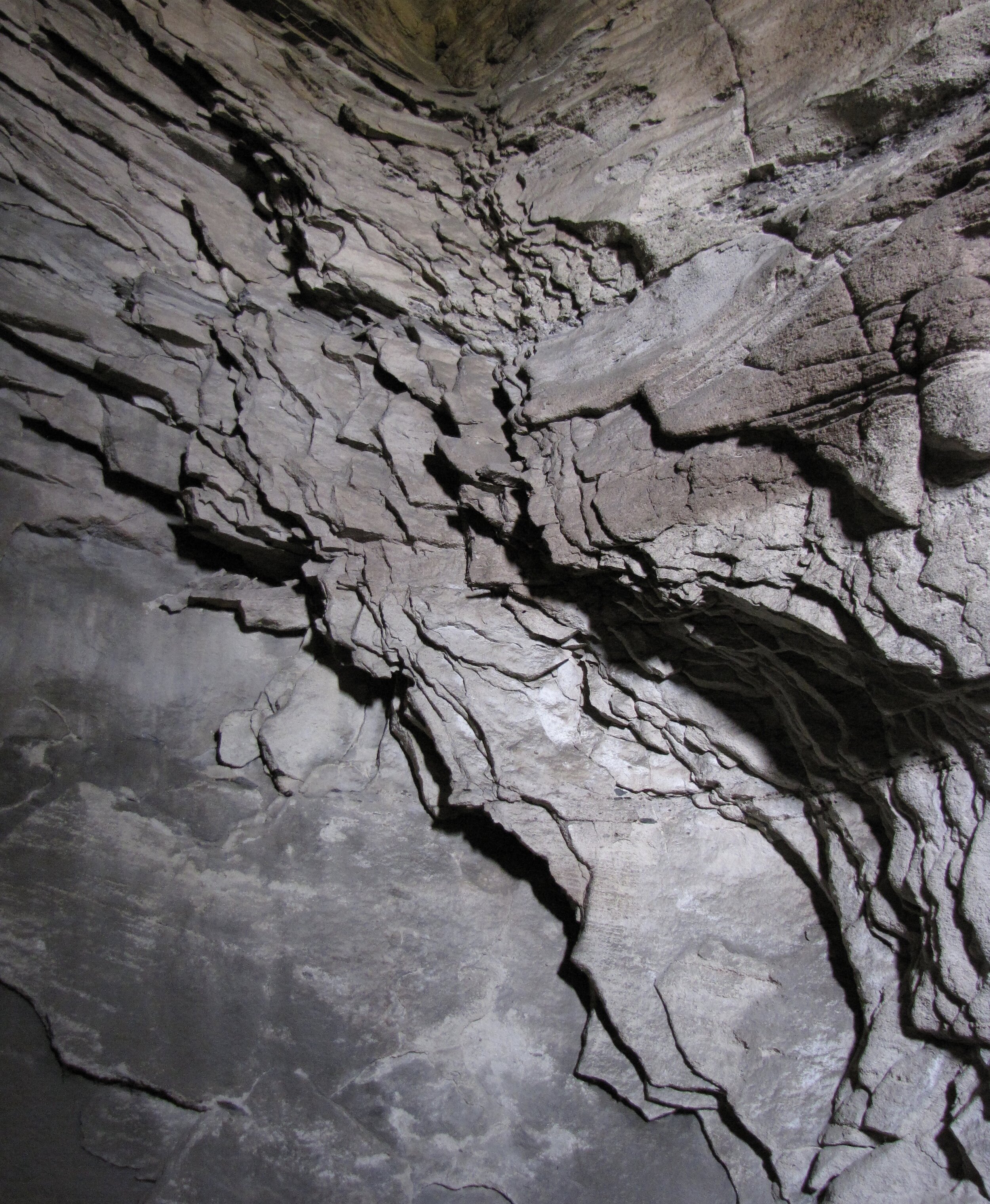
Layers of natural sandstone in Cave 3, Yungang Grottoes. Easily overlooked when juxtaposed with the site’s impressive carvings, the undecorated parts of the caves hold their own particular beauty. Photo by Renée DeVoe Mertz.

The presence of a second-story opening is a common feature at Yungang, allowing light into the cave’s chambers, and, in some cases, causing the Buddha’s face to be visible from outside. Photo by Renée DeVoe Mertz.
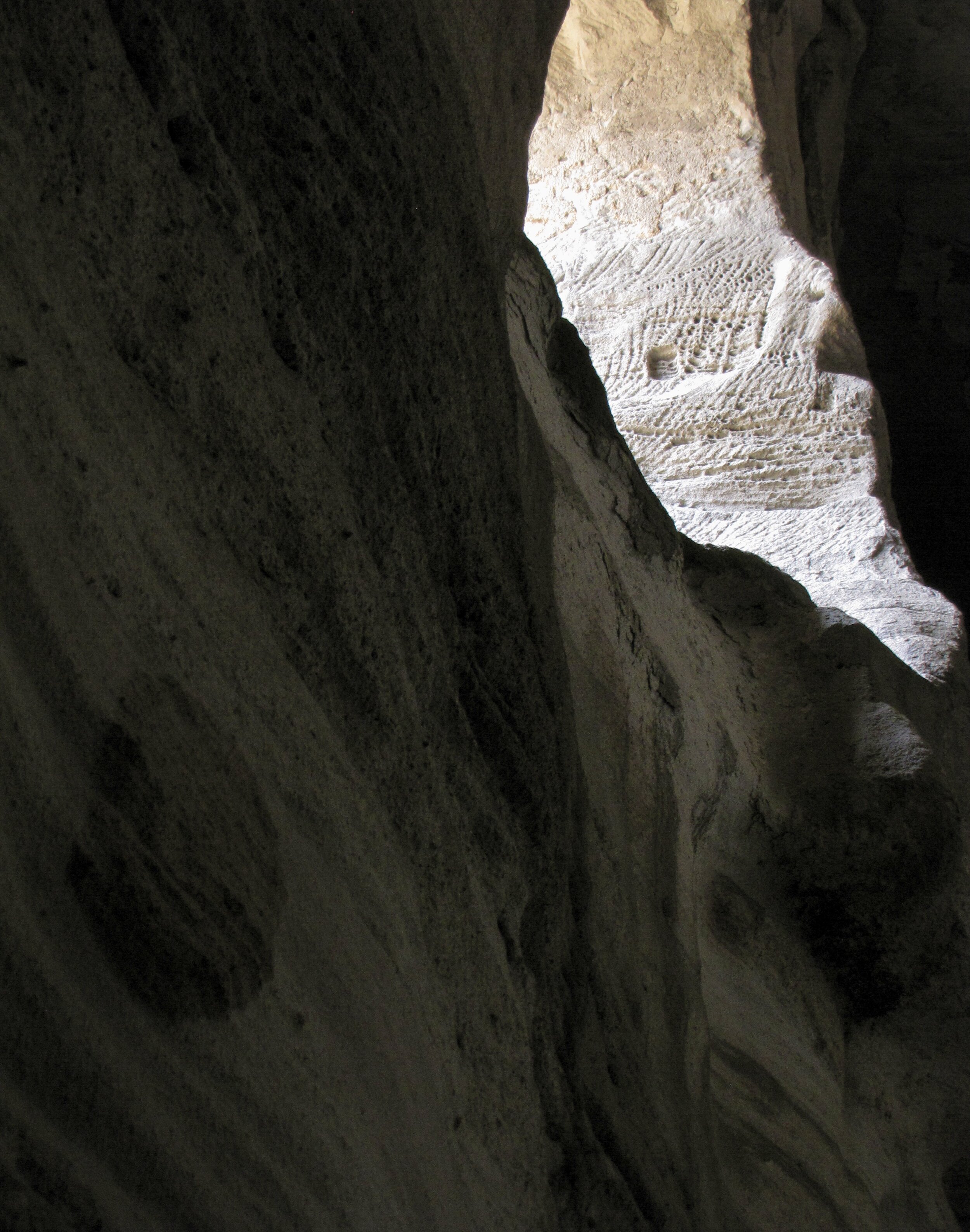
Close-up of the worked and textured stone of Cave 3’s second-story opening and chamber wall. Photo by Renée DeVoe Mertz.
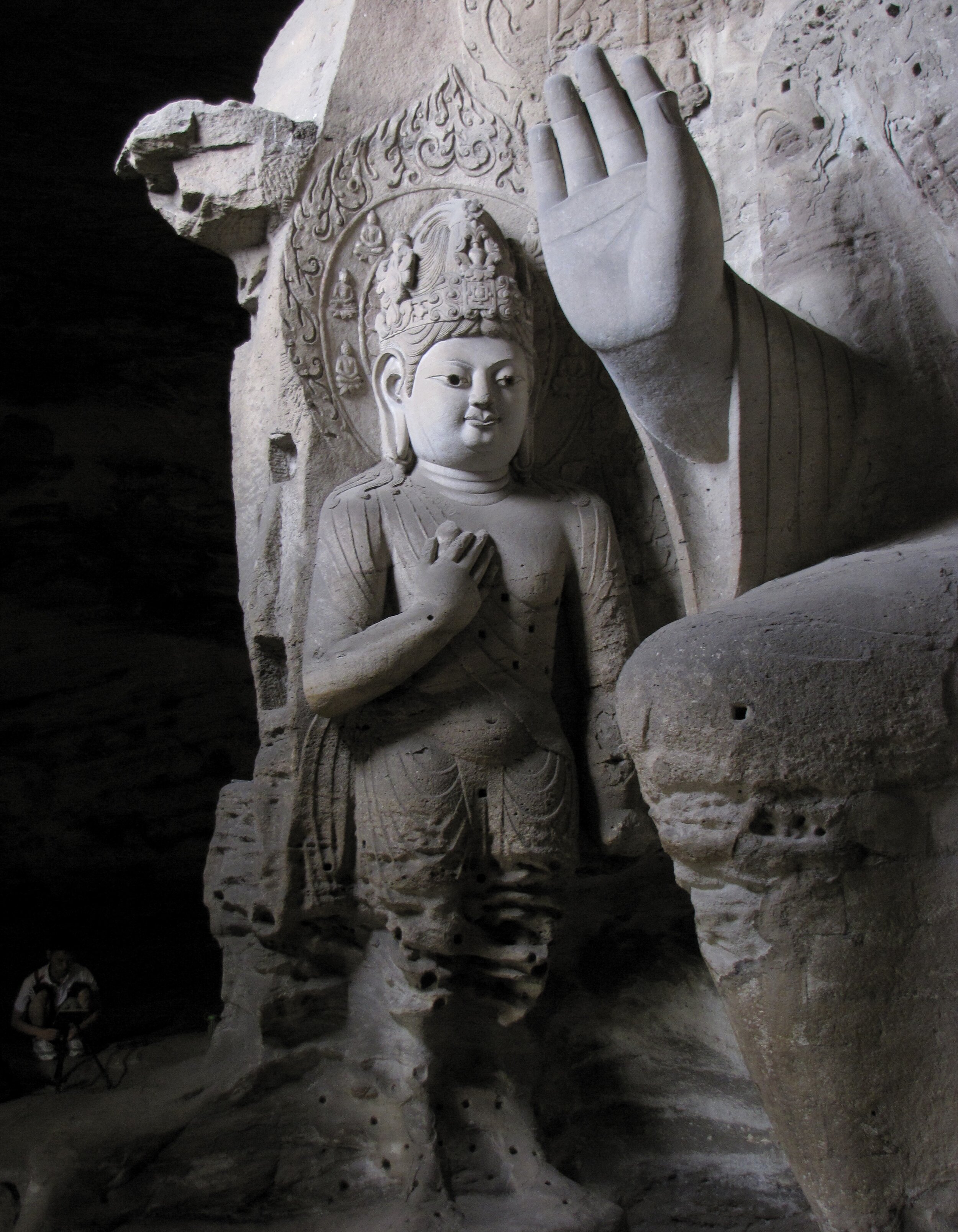
Note the squatting man at the lower left, dwarfed by one of the two smaller statues of Cave 3. Yungang Grottoes, Datong, China. Photo by Renée DeVoe Mertz.

Carved floor stones and small side opening in Cave 3, Yungang Grottoes. Photo by Renée DeVoe Mertz.
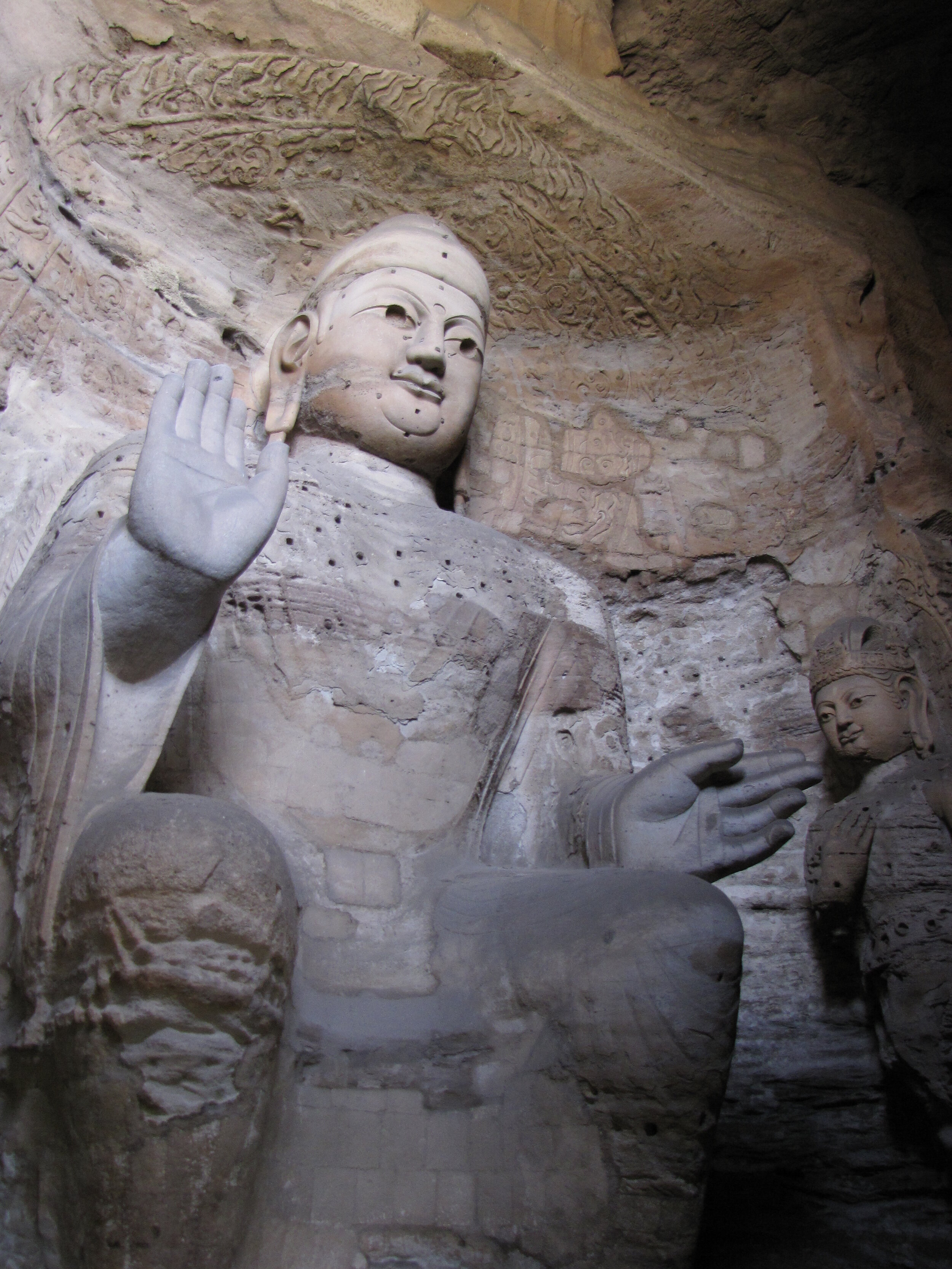
The monumental Buddha of Cave 3, Yungang Grottoes. Photo by Renée DeVoe Mertz.
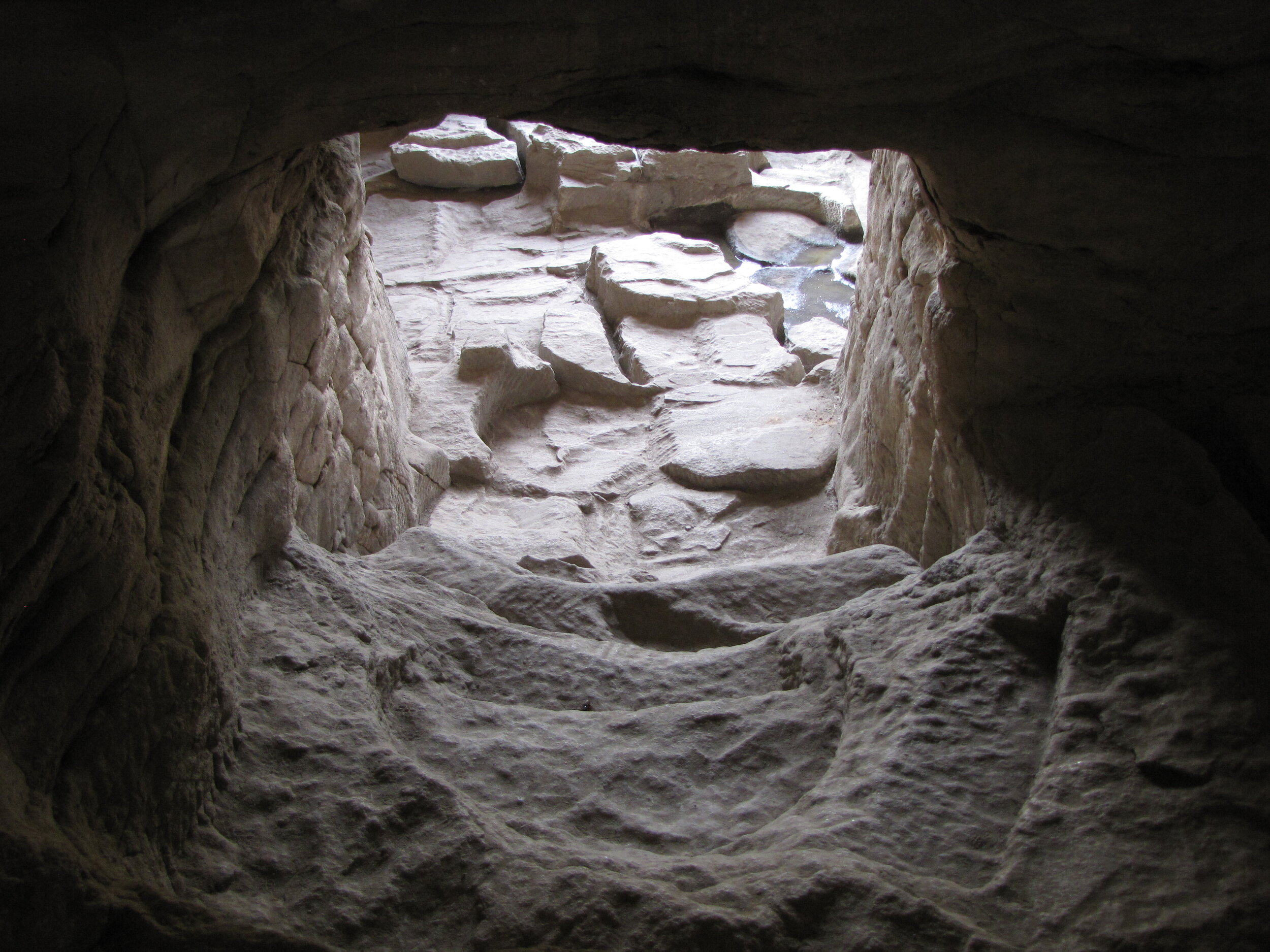
Hewn steps and exit of Cave 3, Yungang Grottoes. Photo by Renée DeVoe Mertz.
